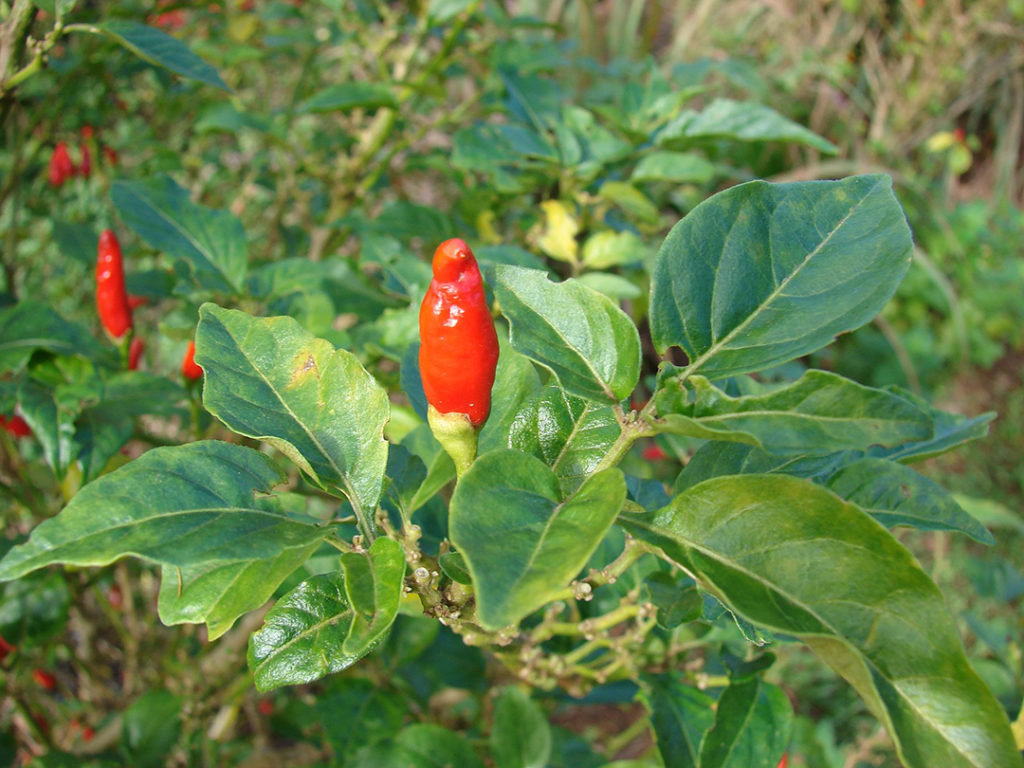
Hungary
Paprika
Capsicum annuum

General Description / Cultural Significance
Paprika, the most extended Hungarian spice with its characteristic sweet pungent scent, was brought to in Hungary from the Turkish empire. Its cultivation since the sixth century means paprika connects Hungarians to their history and heritage. The condiment is produced from the red pepper plant, which needs a lot of sun to grow, and predominantly grows in the plain, which is the hottest part of the country. When ripe, paprika is strung and hung to dry near houses and barns. Once dried out, it is taken to mills to be ground. The red fresh vegetable version of paprika is called a tomato paprika.
Paprika was originally a condiment of the people and later became popular with all social classes and came to have a large influence on Hungarian cuisine. Rich in assorted vitamins, especially C and A, it aids in digestion. Paprika contains the compound capsaicin, which has antioxidant properties and is found to improve immunity and help with a wide variety of cancers. Hungarian paprika has become very famous, and they are the second largest exporter in the world.
Climate Change/Conservation Status
Although Hungary is already facing the effects of global warming, the country’s more urgent problem is air pollution. The country is only second to China in air-pollution linked deaths, which are due to coal burning power plants and car emissions. The country’s dependence on fossil fuels and resistance to develop renewable energy sources do not portend well for its future as the effects of global warming worsen. The country’s summers have been hotter than normal, and the rainfall has been greatly reduced. The Danube continues to be at record low levels, and the country’s wheat crop yield has reduced significantly.
As of 2020, Hungarian farmers have been dealing with extreme weather, including drought, when growing paprika. Several farmers have found natural and sustainable ways to irrigate their crops in the midst of inconsistent rain patterns, but the effects and difficulties continue to intensify.
Alternate Names
Hungarian paprika
Pimenton
Sweet paprika
Sources
Brennan, D., 2020. Health Benefits of Paprika. WebMD. [website]
Cultural Attache, Embassy of Hungary, Research for World Sensorium. This statement can be found on the World Sensorium original website.
Fenyo, K., 2020. Hungarian paprika farmers fend off drought with new ideas and EU help. Reuters. [website]
Vass, E., 2016. Air Pollution at Critical Levels in Hungary. Daily News Hungary. [website]
What-When-How, n.d. Hungary Global Warming. The Crankshaft Publishing. [website]

